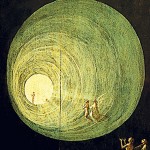How old VHS Tapes Helped shop Early web Design
Andy Baio has saved the early internet alive via digitizing lengthy-forgotten VHS tapes.
January 9, 2015
standard knowledge has it that the rest revealed online can by no means be actually erased. folks petition governments for the “right to be forgotten“—to have personal information and images permanently faraway from the internet. however search for a screenshot or picture from a page of the very early internet, and you’ll be able to find it virtually unimaginable to find. distinguished technologist Andy Baio, who runs the website Waxy.org, the place he promotes tech ephemera and information, has revealed an unlikely portal to an technology that has all but disappeared from nowadays’s internet, and reasonably virtually from the human document: VHS tapes. With these tapes, now viewable on YouTube, comes a critical appear right into a duration that set the stage for the large design and technological changes society has passed through during the last two decades.
A Ragtag option to Archiving the net
The internet Archive was founded in 1996. it is an open-source challenge that homes 435 billion historical snapshots of webpages. however what of the digital traces that lived prior to 1996? a lot of these were misplaced to time.
in the late aughts, Baio found out where he may be capable of to find this historic information. He started out gathering tutorial VHS tapes in regards to the early internet from thrift shops and Amazon’s used video part, where he may get them for approximately a greenback each and every. With names like internet power and Computability they contain loads of out of date jargon and quaint “gee wiz” attitudes, and have been mostly aimed at people who had an internet connection but did not comprehend what to use it for. turns out, these videos make up one of the most simplest documentation left of that on-line era.
Baio commenced importing the videos in 2008. He uploaded some to Viddler, a web page that predates YouTube and allowed him to connect detailed blog posts and annotations. Others appeared on Blip.fm, unless the service unceremoniously deleted all of its movies without discover. still others appear on YouTube, although Baio best made the archive totally public a few months in the past.
What The Tapes expose
The tapes are artifacts of an extinct internet, offering insights into the way in which we noticed the web 20 years ago, and viewpoint on what it has grown into nowadays. one of the material seems hilariously normal—though it unearths how little some basic buildings of the internet have modified. “the point of interest is around the use of [the Internet] as an enormous encyclopedia,” Baio says of the videos shows. “they say issues like, ‘A website online is sort of a e-book. it is divided into chapters, and clicking a hyperlink is like going to a web page.'”
one of the vital greatest variations between the web then and now? Design. in the mid ’90s, the web was once a major repository of static data, seemingly put there by using any person else and by using mysterious manner. “This was [before the popularity of] Geocities,” Baio says. “there were web indexes like Yahoo and early search engines” but even these basic tools would not assist the typical person who was unfamiliar with the net [find websites easily]. if you happen to managed to get on-line it was once nonetheless a time the place quite a lot of stuff was once found through phrase of mouth,” Baio says.
He goes on: “the apparent factor having a look at these outdated screenshots is solely how little regulate [designers] had. The browser defaults determined a lot back then. you did not have keep an eye on over even the heritage colour. it can be a wash of grey.” It used to be a time when the browser-mandated default font was once occasions New Roman, hyperlinks have been blue, and bulleted lists abounded. Even basic design choices like where to put a picture had been made robotically by way of the browser.
paradoxically, this “early web” aesthetic has been taking drugs in every single place over the last few years, adhering to the favored conception that nostalgia is available in 20 year cycles. you can find it in type, track, and even homages by web designers themselves, who yearn for the simplicity of ’90s internet design and the anything-is-that you can think of feeling of the pre-corporatized internet.
An abstract World
Nostalgia for the early net reaches beyond mere aesthetics. It extends into the underlying constructions that gave designers and programmers a visceral connection to their machines. recently, Baio tried to recreate a common feature of the early era of non-public web sites: the embeddable, autoplaying MIDI file. These have been very fashionable on early personal web pages. “They were small enough, they were supported by using the browser, and they match in the free storage space,” Baio says. but nowadays, “Browsers do not beef up MIDI by means of default, or at all.” This compelled him to use a mildly absurd roundabout to reach what would were extremely simple to code twenty years in the past. Baio rendered a MIDI file as an MP3, badly, to be able to maintain its crappy, genuine ’90s sound. “nowadays’s sound cards are too just right,” he joked. Then, to permit it to autoplay, he wanted so as to add a Javascript application to the mix. “So you have taken what would had been a 10K file, a tiny file with just directions for what notes to play, and you may have rendered it out into an MP3 file which is 3MB, insanely large in comparison to a MIDI file,” he says. “So something that was once one line of HTML in 1996 turns into extraordinarily onerous to do now, and you’re now not even doing it right.”
there’s a concept in pc programming called “abstraction,” which describes the fact that programming languages, as they get more straightforward for people to make use of, they also inch farther faraway from binary—from the language that the pc in reality is familiar with. nowadays, writing in chopping-facet programming languages like Ruby or Clojure, your code is translated many times ahead of it turns into something that can in fact interface with the hardware. The evolution of internet design has seen a identical shift toward using instruments which can be extra intuitive for people and not more intuitive for machines. Take instruments like Squarespace or WordPress, which allow customers to create skilled-having a look websites without coding the rest themselves. This has the aspect effect of creating it far more troublesome for us to remember what’s in reality occurring once we click a button or press play on a video. it’s a stage of belief in machines, and in the many programmers and net designers who’ve come prior to us, that, as Vikram Chandra points out in his excellent guide Geek elegant, can result in inexplicable and on occasion dangerous bugs.
Abstraction, each literal and metaphorical, is some other reason why initiatives like Baio’s are so vital. “with out cultural artifacts, civilization has no reminiscence and no mechanism to examine from its successes and screw ups,” the web Archive writes on its web page. As computer systems transform quicker, extra advanced, and more straightforward to make use of, their history retreats at a daunting speed. we have to make an lively try and store what documentation of this pivotal time in history we’ve. in any other case it usually is drowned via the tides of progress for good.
standard knowledge has it that anything printed on-line can never be truly erased. folks petition governments for the “proper to be forgotten“—to have non-public information and pictures permanently removed from the internet. but look for a screenshot or picture from a web page of the very early web, and you’ll find it almost unattainable to find. outstanding technologist Andy Baio, who runs the site Waxy.org, where he promotes tech ephemera and information, has found out an not going portal to an era that has all but disappeared from today’s internet, and rather just about from the human document: VHS tapes. With these tapes, now viewable on YouTube, comes a very important look into a period that set the stage for the huge design and technological modifications society has passed through over the past twenty years.
A Ragtag technique to Archiving the web
The web Archive used to be based in 1996. it is an open-source challenge that properties 435 billion historic snapshots of webpages. but what of the digital traces that lived before 1996? a lot of those were lost to time.
in the late aughts, Baio found out where he might be capable of to find this historic data. He commenced collecting educational VHS tapes concerning the early internet from thrift shops and Amazon’s used video section, the place he could get them for approximately a greenback every. With names like internet energy and Computability they contain loads of outdated jargon and quaint “gee wiz” attitudes, and have been largely aimed at individuals who had an web connection but did not recognize what to make use of it for. seems, these movies make up one of the best documentation left of that on-line era.
Baio started importing the videos in 2008. He uploaded some to Viddler, a website online that predates YouTube and allowed him to connect specified weblog posts and annotations. Others seemed on Blip.fm, except the carrier unceremoniously deleted all of its movies with out notice. still others appear on YouTube, although Baio only made the archive totally public a number of months ago.
What The Tapes disclose
The tapes are artifacts of an extinct internet, offering insights into the best way we noticed the net two decades ago, and point of view on what it has grown into as of late. one of the material appears hilariously basic—although it finds how little some general buildings of the web have changed. “the point of interest is round the usage of [the Internet] as an enormous encyclopedia,” Baio says of the videos presentations. “they say issues like, ‘A site is sort of a book. it is divided into chapters, and clicking a hyperlink is like going to a web page.'”
probably the most greatest variations between the online then and now? Design. within the mid ’90s, the net was once a major repository of static knowledge, reputedly put there by any person else and through mysterious method. “This was once [before the popularity of] Geocities,” Baio says. “there have been web indexes like Yahoo and early search engines” but even these normal instruments would not lend a hand the common person who was once unfamiliar with the online [find websites easily]. if you happen to managed to get on-line it was once nonetheless a time where various stuff was found by means of word of mouth,” Baio says.
He goes on: “the obvious factor looking at these old screenshots is simply how little regulate [designers] had. The browser defaults determined so much again then. you did not have keep an eye on over even the historical past colour. it can be a wash of gray.” It used to be a time when the browser-mandated default font was once occasions New Roman, hyperlinks were blue, and bulleted lists abounded. Even basic design selections like where to put a picture had been made routinely by means of the browser.
satirically, this “early internet” aesthetic has been popping up all over the place over the past few years, adhering to the well-liked idea that nostalgia is available in 20 12 months cycles. you’ll find it in type, music, and even homages by net designers themselves, who yearn for the simplicity of ’90s internet design and the anything-is-that you can think of feeling of the pre-corporatized internet.
An abstract World
Nostalgia for the early net reaches past mere aesthetics. It extends into the underlying buildings that gave designers and programmers a visceral connection to their machines. recently, Baio tried to recreate a standard characteristic of the early technology of personal web pages: the embeddable, autoplaying MIDI file. These were highly regarded on early personal web sites. “They have been sufficiently small, they have been supported by the browser, and so they match in the free space for storing,” Baio says. however lately, “Browsers do not beef up MIDI by way of default, or in any respect.” This pressured him to use a mildly absurd roundabout to achieve what would had been extremely easy to code 20 years in the past. Baio rendered a MIDI file as an MP3, badly, so that you could maintain its crappy, authentic ’90s sound. “these days’s sound playing cards are too excellent,” he joked. Then, to permit it to autoplay, he wanted so as to add a Javascript software to the mix. “So you’ve taken what would had been a 10K file, a tiny file with just instructions for what notes to play, and you’ve rendered it out into an MP3 file which is 3MB, insanely big compared to a MIDI file,” he says. “So one thing that was one line of HTML in 1996 turns into extremely laborious to do now, and you’re now not even doing it proper.”
there’s an idea in computer programming known as “abstraction,” which describes the truth that programming languages, as they get more uncomplicated for humans to make use of, they also inch farther faraway from binary—from the language that the pc in truth understands. today, writing in cutting-area programming languages like Ruby or Clojure, your code is translated repeatedly prior to it becomes one thing that may in reality interface with the hardware. The evolution of net design has considered a identical shift toward the usage of instruments which might be more intuitive for humans and not more intuitive for machines. Take instruments like Squarespace or WordPress, which permit customers to create professional-having a look internet sites without coding the rest themselves. This has the side effect of constructing it way more troublesome for us to understand what’s in reality going on once we click on a button or press play on a video. it can be a degree of trust in machines, and in the many programmers and web designers who have come before us, that, as Vikram Chandra points out in his excellent e book Geek sublime, can result in inexplicable and infrequently unhealthy bugs.
Abstraction, both literal and metaphorical, is every other it’s because projects like Baio’s are so vital. “with out cultural artifacts, civilization has no reminiscence and no mechanism to analyze from its successes and failures,” the web Archive writes on its site. As computers develop into faster, more evolved, and more uncomplicated to make use of, their historical past retreats at a frightening speed. we’ve got to make an energetic attempt to save what documentation of this pivotal time in history we now have. in any other case it can be drowned via the tides of development for good.
[VHS Tape: Yevgen Romanenko by means of Shutterstock]
(151)













